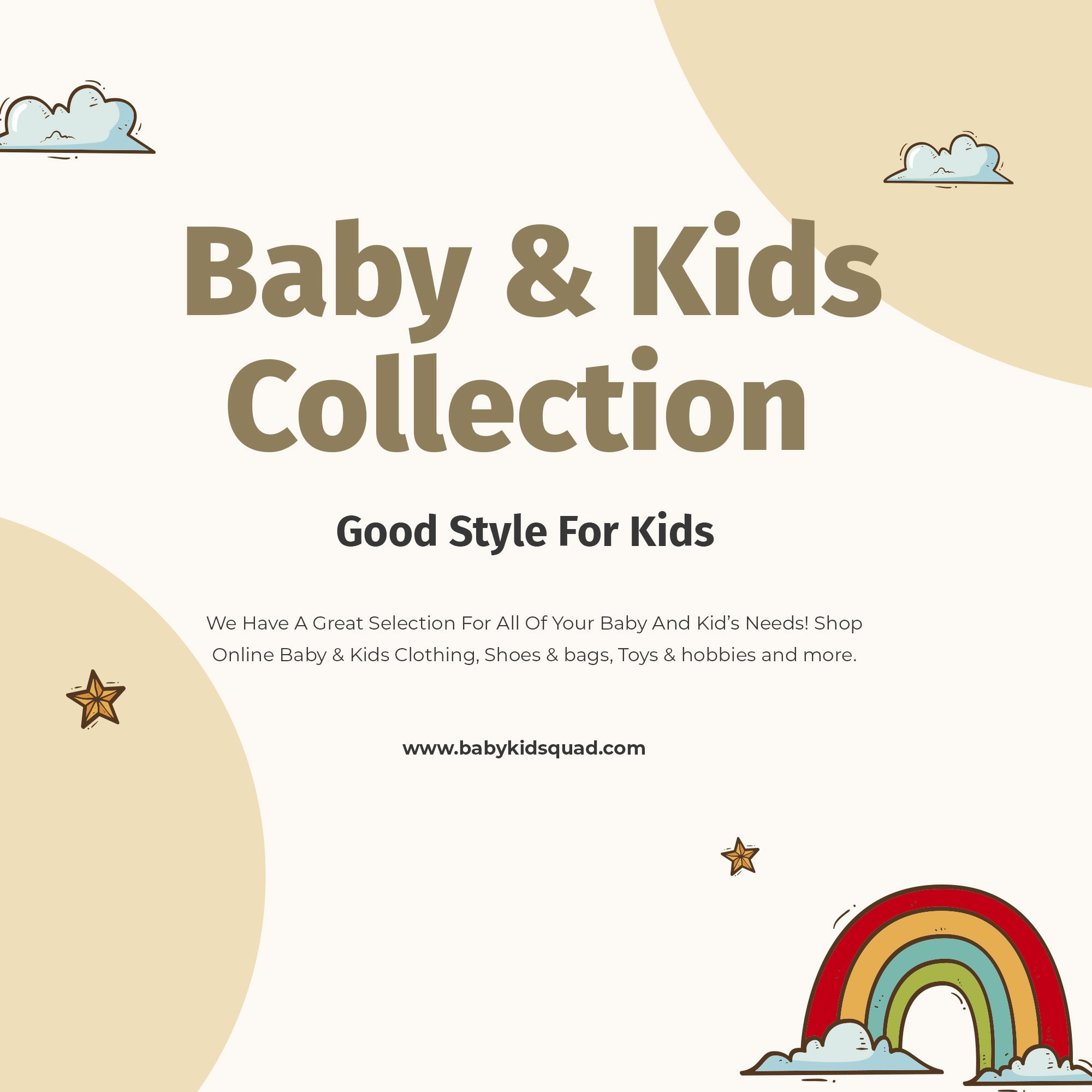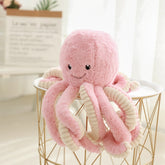How to Disinfect a Plush Toy: A Parent's Essential Guide
Table of Contents
- Introduction
- Understanding the Importance of Disinfecting Plush Toys
- When and How Often to Disinfect Plush Toys
- Types of Plush Toys and Cleaning Methods
- Preventive Measures to Keep Plush Toys Clean
- Conclusion
Introduction
Did you know that plush toys can harbor a surprising amount of germs and allergens? It’s true! Studies reveal that children’s beloved stuffed animals are often crawling with bacteria, dust mites, and even traces of their owners' colds. With little ones frequently cuddling their plush companions, it’s crucial for parents to understand how to keep these cherished items clean and safe.
At Baby Kid Squad, we believe that parenting should be stylish and practical, which is why we’re dedicated to providing you with the best tips and products to navigate the journey of childhood. In this blog post, we will explore comprehensive methods on how to disinfect a plush toy, ensuring your child’s favorite stuffed animal remains a source of comfort and joy without compromising on health.
By the end of this guide, you’ll not only know how to effectively clean plush toys but also how to maintain their quality over time. We’ll cover different cleaning methods based on the type of plush toy, delve into preventive measures to keep them cleaner for longer, and share helpful tips along the way. Whether you have a machine-washable teddy bear or a beloved vintage plush that requires special care, together, we’ll ensure all your queries are answered.
Let’s dive into the world of plush toy care and discover the best practices to keep these cuddly friends germ-free and ready for play!
Understanding the Importance of Disinfecting Plush Toys
The significance of disinfecting plush toys is often underestimated. Children interact closely with these toys, which makes them susceptible to collecting dirt, allergens, and germs. Plush toys can be breeding grounds for bacteria, especially if they have been exposed to illness or are regularly carried around outside.
Health Implications
Research indicates that stuffed animals can harbor pathogens, particularly after being handled by sick children. Regular cleaning not only keeps the toy visually appealing but also minimizes the risk of illness. For instance, according to pediatric guidelines, toys that are frequently put in children's mouths or come into contact with their faces should be sanitized regularly to protect against the spread of infections.
Emotional Connection
Plush toys play a crucial role in children's emotional well-being. They provide comfort, companionship, and a sense of security. Therefore, ensuring these toys are clean can contribute to a healthier emotional environment for your child. A clean plush toy can also help foster good hygiene habits from an early age.
When and How Often to Disinfect Plush Toys
Determining the frequency of cleaning plush toys can depend on several factors:
- Daily Use: If your child sleeps with their plush toy or takes it everywhere, aim to clean it weekly.
- Sickness: Disinfect immediately after your child has been ill to prevent the spread of germs.
- Visible Dirt or Odor: Clean plush toys if they look dirty or begin to smell.
- Seasonal Allergies: During allergy season, regular cleaning can help reduce allergens.
Regular maintenance can go a long way in preserving the life of your plush toys. A good practice is to integrate plush toy cleaning with other household chores, such as washing bed linens.
Types of Plush Toys and Cleaning Methods
Different plush toys may require various cleaning methods based on their materials and construction. Here, we’ll break down the best practices for the most common types of plush toys.
1. Machine-Washable Plush Toys
Many plush toys are designed to withstand a washing machine cycle, making them easier to clean.
Steps to Machine Wash
- Read the Care Label: Before anything, check the care label for specific instructions.
- Prepare for Washing: Place the plush toy inside a mesh laundry bag. This will help protect it during the wash cycle.
- Select the Right Cycle: Use a gentle cycle with cold water to prevent damage.
- Add Detergent: Use a mild detergent. For extra sanitization, consider adding a laundry sanitizer.
- Drying: Air dry is often the best option. If machine drying is recommended, use a low heat setting. Adding a few clean towels can help fluff the toy.
By following these steps, you can ensure that your machine-washable plush toys are properly cleaned and disinfected.
2. Hand-Washable Plush Toys
Some plush toys may require a gentler approach, especially those with delicate fabrics or embellishments.
Steps to Hand Wash
- Prepare a Cleaning Solution: Mix a few drops of mild detergent with cool water in a basin.
- Spot Clean: For visible stains, use a clean cloth to dab the affected area with the detergent solution.
- Soak and Scrub: Submerge the plush toy in the soapy water, gently massaging the fabric. Avoid excessive rubbing to prevent damage.
- Rinse Thoroughly: Rinse under cool running water until all soap is gone.
- Air Dry: Place the toy in a well-ventilated area to dry completely.
Hand washing can be a great way to clean delicate toys without risking damage.
3. Non-Washable Plush Toys
For plush toys that are labeled “spot clean only” or have electronic components, different methods are necessary.
Cleaning Techniques
- Spot Cleaning: Use a damp cloth and a small amount of detergent to clean specific areas. Always test a small area first to avoid discoloration.
- Vacuuming: Use a vacuum cleaner with an upholstery attachment to remove dust and debris from the surface.
- Freezing: Place non-washable toys in a sealed plastic bag and leave them in the freezer overnight. This method can kill dust mites and other allergens.
- Baking Soda: For odors, sprinkle baking soda over the plush toy, let it sit for 15-30 minutes, and then vacuum it off.
These methods can help maintain the cleanliness of plush toys that cannot be submerged in water.
Preventive Measures to Keep Plush Toys Clean
While regular cleaning is essential, taking steps to keep plush toys clean can also make a significant difference.
Establish a Cleaning Routine
Incorporate plush toy cleaning into your household cleaning routine. For instance, consider washing plush toys during your normal laundry days. This simple step can help ensure they don’t get overlooked.
Educate Your Child
Teach your child about hygiene and the importance of keeping their toys clean. Encourage them to avoid taking plush toys outside or to places where they might get dirty unnecessarily.
Store Properly
When not in use, store plush toys in a clean, dry place. Avoid areas that may expose them to dust and moisture, which can lead to mold growth.
Use Protective Covers
For particularly beloved or delicate toys, consider using protective covers. These can be washed more frequently than the toy itself and can help keep dust and allergens at bay.
Conclusion
In conclusion, knowing how to disinfect a plush toy is an essential skill for any parent. By implementing the cleaning methods outlined above, you can ensure your child’s favorite companions remain clean, safe, and comforting. Regular cleaning not only protects their health but also helps maintain the integrity of the toys they love so much.
At Baby Kid Squad, we are committed to providing parents with practical and stylish solutions for their families. Our curated collections of baby clothing, boys' clothing, girls' clothing, and more ensure that you’ll find everything you need to support your parenting journey with confidence and flair. For all your plush toy needs, don't hesitate to explore our collections today!
FAQ
Q: How often should I wash my child's plush toys?
A: If your child frequently uses their plush toys, aim for weekly cleaning. At a minimum, clean them once a month, especially if anyone in the household has allergies.
Q: Can I machine wash all plush toys?
A: Not all plush toys are machine washable. Always check the care label. If it says "spot clean only," follow the recommended cleaning methods for delicate toys.
Q: What if my plush toy has electronic components?
A: For plush toys with electronics, avoid submerging them in water. Instead, use spot cleaning, vacuuming, or freezing methods to keep them clean.
Q: What is the best way to remove odors from plush toys?
A: Sprinkling baking soda over the plush toy and vacuuming it after a while can effectively remove odors.
Q: How can I sanitize plush toys without washing them?
A: You can use a child-safe disinfectant spray or steam cleaning to sanitize plush toys that cannot be washed. Always test on a small area first to prevent damage.
By equipping yourself with this knowledge, you can ensure that your child's plush toys remain safe and clean for cuddles, play, and comfort. Happy cleaning!









